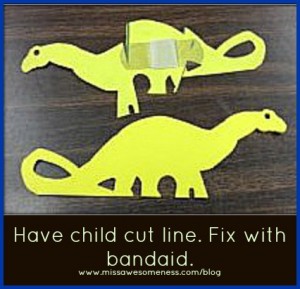OTs Help Put the Able into Actionable: R A W = S A
READY +ABLE +WILLING = Successful Action
A psychologist friend recently told me about the phrase “Ready, Willing, and Able”. All three components must be there for any Successful Action to occur.
R.A.W. = S.A.
Possible reasons for inaction:
*Ready, able, NOT willing
*Willing, able, NOT ready
*Ready, willing, NOT able
When the person is ready and willing yet not ABLE it is typically the most self-devastating. In all of the above cases, especially “not able”, an occupational therapist can help.
Whether it’s a challenge physically, mentally, or a combination of the two, OTs break down the issues and help figure out how to find and repair the missing link. Then all three components (ready, able, willing) are there, subsequently leading to an action, and therefore meaningful and appropriate participation!
If you click on the “Printables” tag, this should be up there as a PDF that can be easily printed. The first page is somewhat of a “cheat sheet” and pages 2-4 are the longer detailed version. Page 5 is an accident. Sorry. (Oh look, I managed to insert it here which is good because I also apparently don’t know to upload it to printables yet. Can you tell my website/type of blogsite is new and I have no idea what I’m doing?)
RAWSA in OT: Focusing on Successful Action
Click the read more link to see example stories of depression/executive functioning deficits affecting a person’s actions [and my typical excessive details]! (It turns out I also don’t know how to use the read more link appropriately either. AHAHAHAHAA. Soon!!)
Cutting/fine motor manipulation/imagination: OT Activity
ACTIVITY
1. Take dinosaur post-it or other random animal paper. Child cuts across animal.
2. Child is veterinarian and fixes animal. (Skim over the fact we were directly responsible for its hurt, cough).
3. Give child a band-aid.
4. Child puts animal pieces together in right orientation, secures band-aid.
See below about grading the activity, skills worked on, and extra notes, while I figure out how to add in a “read more” link 🙂
TO GRADE ACTIVITY (change difficulty level) depending on child’s strengths/weaknesses:
Cutting:
Harder: Multiple lines, thinner lines, curvy or wiggled lines, lower contrast lines, more directions, having child make own lines first and cut out own.
Easier: One thick line, high contrast, fewer directions, no line at all, thicker paper (like a manila folder, construction paper, index card), modified scissors
Band-aid:
Harder:Child gets out band-aid and performs rest of task independently or with minimal assistance, no prompting for sequencing
Easier: Open the band-aid or help the process (start it until manageable by child, such as peeling the bandaid pieces a tiny bit apart and child takes over). Help hold the papers down so child can apply bandaid.
Imagination:
Harder: Do not give the child a sample, fewer prompts, encourage playing pretend
Easier: Role model playing pretend yourself only, give child sample
SKILLS worked on with animal band-aid activity:
- Cutting
- Fine motor manipulation (opening and placing bandaid)
- Visuospatial organization (placing pieces back together)
- Imagination/creativity/flexibility (understanding concept via drama/pretend/silliness)
- Life skill (manipulating band-aid)
- Cognition/Problem-solving (figuring out how to use the band-aid and put it all together)
Notes:
1. Be silly/dramatic. Children with mental rigidity can handle this sort of task as it’s concrete enough to make sense, but the imaginative creative piece is helped by silliness. “Oh nooooo our poor dinosaur!! I hope we can fix him!!!”
2. KIDS LOVE BANDAIDS. I didn’t have any cool ones, but that would help even more. If you have more than one type, let them choose. Even children resistant to cutting/directions may complete this task if they see a band-aid is involved!


